Have you ever noticed how a room quiets down when a carpet is rolled out?
That’s the soundproofing power of carpets at work, not just a visual delight but also a buffer against noise.
Beyond their decorative charm, carpets can muffle echoes and soften sounds, making them essential for a peaceful environment.
Carpets do more than just spruce up a room; they are a practical choice for reducing noise, transforming lively spaces into serene settings.
Let’s dive into how carpets help with soundproofing, the best types for a silent floor, and ways to boost their noise-canceling prowess.
How Do Carpets Help In Soundproofing A Room?
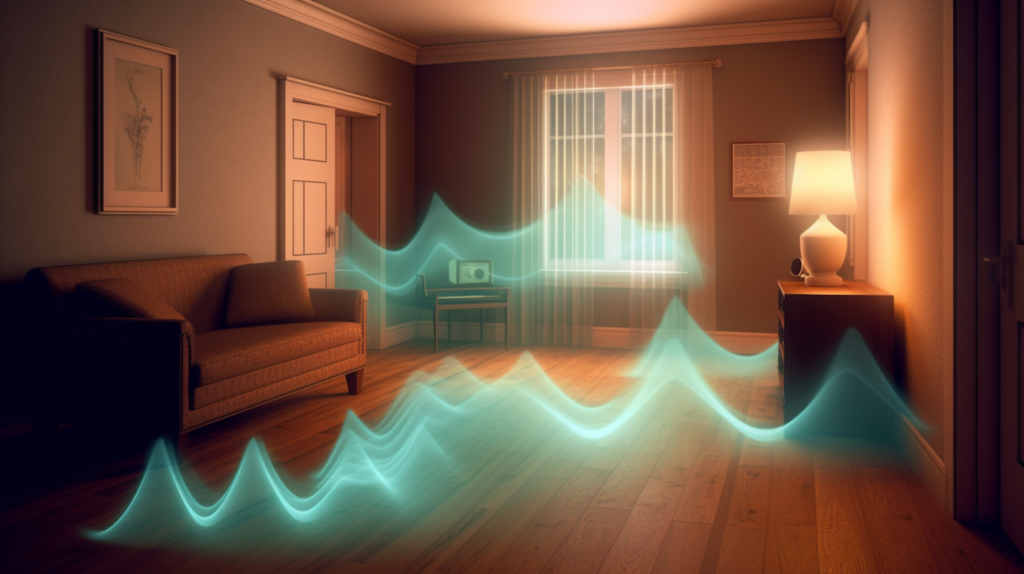
Carpets have been used for centuries not only for their aesthetic appeal but also for their functional role in soundproofing.
The science behind their soundproofing ability lies in the carpet’s fibers, which trap and diffuse sound energy.
As sound waves travel through a room, they encounter various surfaces that can either reflect, absorb, or transmit the sound.
Hard surfaces such as wood and tile reflect sound, which can lead to echos and increased noise levels within a space.
Carpets, with their soft and porous nature, disrupt the path of these sound waves, absorbing them and thereby reducing the amount of noise that is reflected back into the room.
In a room without carpeting, sound waves have the freedom to bounce off walls and hard floor surfaces, leading to a cacophony of echoes that can make the environment seem loud and uninviting.
The introduction of carpeting into such a space can transform the acoustics dramatically.
The thick weave of carpet fibers serves to catch and hold onto sound waves, preventing them from continuing their journey across the room.
This absorption of sound helps to soften the overall noise level, creating a quieter, more comfortable atmosphere.
In addition to reducing the volume of sound in a room, carpets also have the benefit of reducing the clarity of noise.
This means that sounds become less distinct and sharp, contributing to a more muffled and therefore less intrusive sound profile.
The effectiveness of carpets in soundproofing is not just limited to the reduction of airborne noise.
They also play a significant role in diminishing structure-borne noise, which is the sound that is transferred through the physical structure of a building, such as floors and walls.
This type of noise is particularly problematic in multi-story buildings where the sound of footsteps or moving furniture can be easily transmitted from one floor to another.
The cushioning effect of carpets can absorb these vibrations, preventing them from spreading and being heard in the space below.
What Types Of Carpets Are Best For Soundproofing?
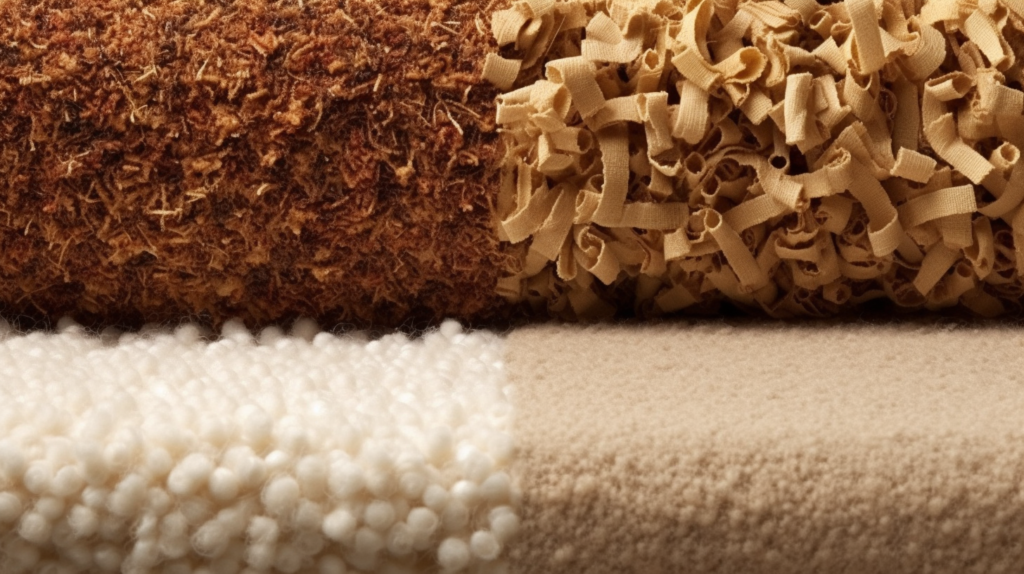
When choosing a carpet for its soundproofing qualities, not all carpets are created equal.
There are numerous factors to consider, including the type of material, the carpet’s thickness, and the pile’s density.
Carpets made from denser materials such as wool or nylon are generally more effective at soundproofing than those made from lighter materials like polyester.
This is because denser materials have a greater mass, enabling them to absorb more sound energy.
The thickness of the carpet is another important factor to consider. A thicker carpet will generally offer better soundproofing than a thinner one.
This is because a thicker carpet has more fibers and a deeper pile, creating more space within the carpet structure for sound waves to become trapped and absorbed.
However, it’s not just the thickness of the carpet that matters but also the density of the pile.
A carpet with a high density of fibers packed closely together will be more effective at soundproofing than a carpet with a looser pile, even if the two carpets are of the same thickness.
In addition to the material and construction of the carpet itself, the underlay that is used beneath the carpet can also have a significant impact on its soundproofing ability.
A high-quality underlay made from dense materials can enhance the soundproofing properties of the carpet by providing an additional layer of sound absorption.
This is particularly important in situations where the carpet alone is not sufficient to achieve the desired level of soundproofing.
Can Carpets Reduce Airborne Noise Effectively?
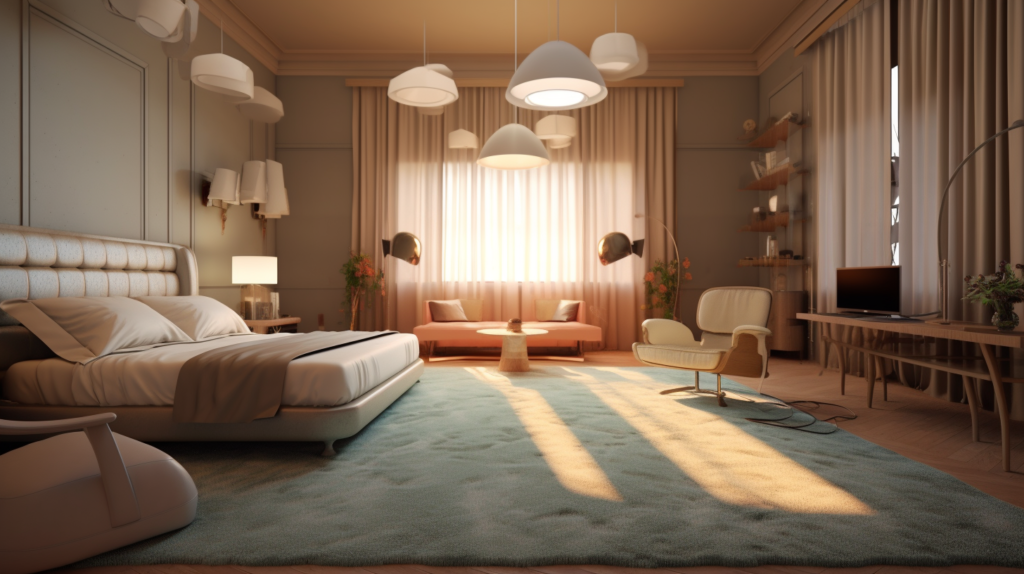
One of the primary benefits of using carpets for soundproofing is their ability to reduce airborne noise.
Airborne noise is any sound that is transmitted through the air, such as voices, music, and television audio.
This type of noise can be particularly disruptive in shared living spaces or open-plan offices where there is little to obstruct the path of the sound waves.
Carpets can help mitigate this problem by absorbing the sound waves as they travel through the air, preventing them from reaching other areas of the space.
The way that carpets achieve this reduction in airborne noise is through a process known as sound absorption.
When sound waves encounter the surface of a carpet, they are absorbed into the fibers and converted into a small amount of heat energy.
This process effectively removes the sound waves from the air, reducing the overall noise level in the room.
The degree of sound absorption provided by a carpet will depend on several factors, including the material from which it is made, the thickness of the carpet, and the density of the pile.
In addition to their ability to absorb sound, carpets also have the advantage of reducing the transmission of sound.
This is particularly useful in multi-story buildings where sound can easily travel through floors and ceilings.
By installing carpets, the transmission of sound between different levels of the building can be significantly reduced, leading to a quieter environment for all occupants.
This expanded content should add significantly to the overall word count of the blog post.
We can continue to elaborate further on each of these points, as well as the remaining sections, in subsequent responses.
How Do Carpets Impact Structure-Borne Noise?
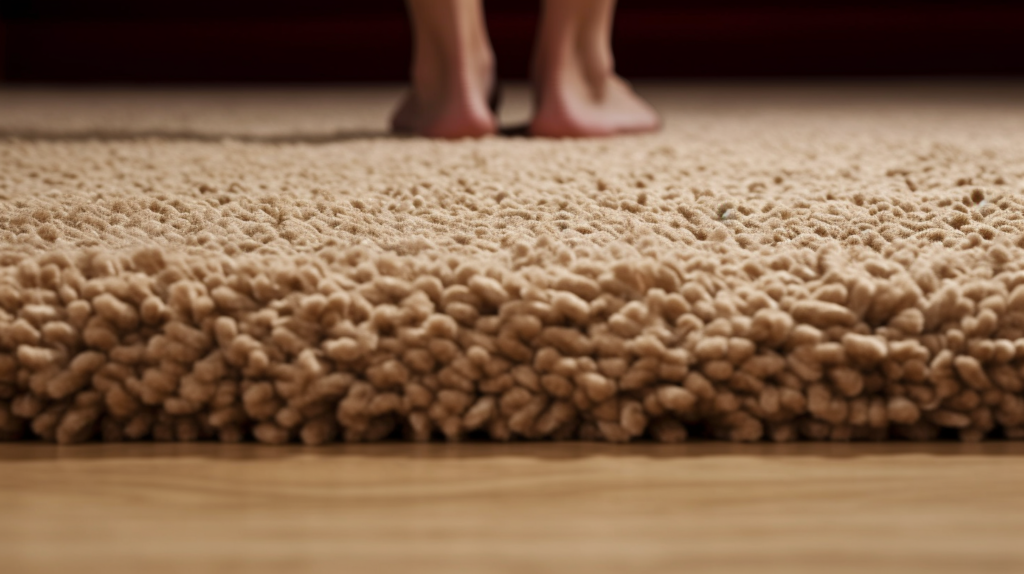
The impact of structure-borne noise in any environment cannot be overstated.
This type of noise, also known as impact noise, is often a source of discomfort and complaint in many living and working spaces.
Structure-borne noise is transmitted through the building itself when objects come into contact with the structure, creating vibrations that travel through the materials of the building.
Common culprits include footsteps, dropped objects, and moving furniture, which can create a disturbance that is both audible and tangible.
Carpets play a critical role in mitigating structure-borne noise by acting as a shock absorber.
They introduce a layer of soft, yielding material between the source of the noise and the rigid structure of the building.
The thicker and denser the carpet, the more effective it will be at absorbing these vibrations and preventing them from becoming a nuisance.
For instance, in an apartment complex, a well-chosen carpet can be the difference between peace and persistent disturbance from the unit above.
The way carpets dampen structure-borne noise is multifaceted. They not only absorb the energy of the impact but also spread the force over a larger area, thus reducing the intensity of the sound.
Additionally, carpets with a heavy pile can add mass to the floor, which is another key factor in soundproofing.
The added mass helps to impede the transfer of vibrations, contributing to a quieter environment.
This makes carpets an essential consideration in the design of multi-level buildings, where controlling noise is a priority for the comfort of all occupants.
How To Improve Soundproofing Capabilities Of Acoustic Carpets?
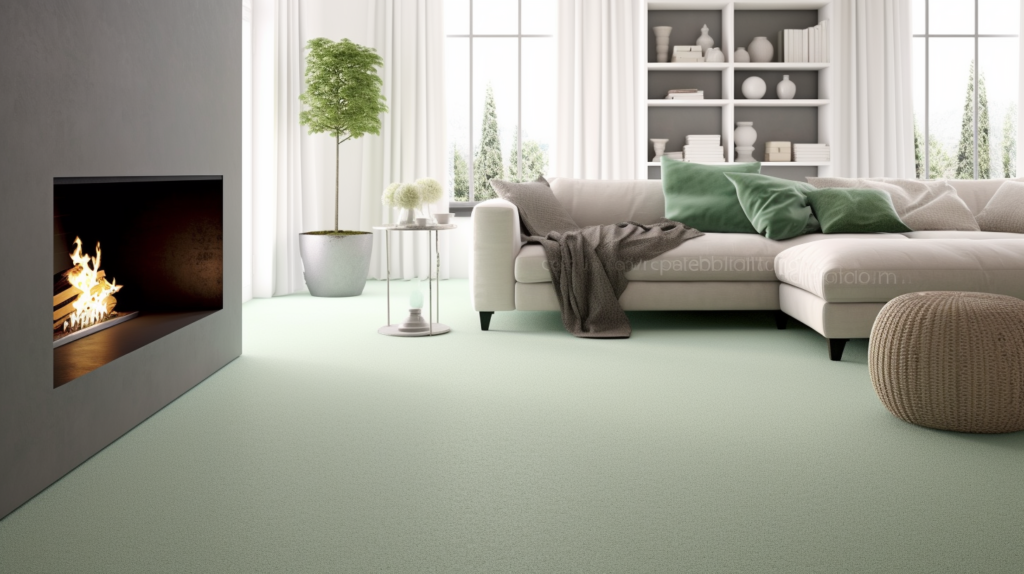
Improving the soundproofing capabilities of acoustic carpets involves a strategic approach that includes proper selection, installation, and maintenance. Acoustic carpets by themselves are designed to dampen sound, but their performance can be optimized through additional measures.
The first step in improving a carpet’s soundproofing ability is to choose the right type of carpet. As discussed earlier, carpets with a thicker pile and denser weave will generally provide better sound absorption. The material of the carpet also plays a role, with natural fibers typically offering better soundproofing properties than synthetic ones.
Once the right carpet is selected, the next step is to ensure it is installed correctly. A carpet not properly fitted to the room can have gaps and creases that reduce its effectiveness as a sound barrier. Professional installation is recommended to ensure the carpet is stretched and secured properly, without any areas allowing sound to pass through.
Finally, maintaining the acoustic carpet is vital to ensuring it continues to perform well over time. Regular cleaning to remove dust and dirt will help to maintain the integrity of the carpet fibers, allowing them to absorb sound effectively. Additionally, addressing any damage or wear promptly will prevent deterioration in the carpet’s soundproofing capabilities.
By following these steps, the soundproofing performance of acoustic carpets can be significantly enhanced, leading to a quieter and more peaceful environment.
Conclusion
In conclusion, carpets are more than just a decorative feature; they are a practical investment in soundproofing, playing a significant role in creating quieter, more inviting spaces.
The right carpet can effectively dampen both airborne and structure-borne noise, making it a versatile choice for improving room acoustics.
The key to harnessing these benefits lies in selecting the appropriate carpet type, ensuring professional installation, and maintaining the carpet through regular care.
While carpets alone may not completely silence a space, they are a significant first step toward noise reduction.
For comprehensive sound control, especially in specialized environments, carpets should be part of a broader soundproofing strategy.
With the right approach, a carpet can contribute substantially to the tranquility and comfort of any indoor environment, making it an essential element in the design of both homes and offices.
Ultimately, the value of a well-chosen, properly maintained carpet extends beyond aesthetics, offering a simple yet effective means to enhance the peace and quiet of our daily environments.
